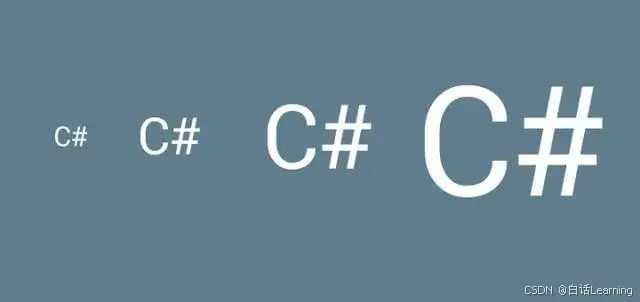阅读量:0
文章目录

在 C# 中,索引器(Indexer)是一种特殊的属性,允许类的实例像数组一样通过索引访问。索引器使得可以定义类似于数组的访问方式,但是访问的对象可以是类的实例,而不仅限于数组。
1. 索引器的基本概念
索引器允许通过类实例的索引来访问该类的实例成员。它的声明类似于属性,但具有参数。通常情况下,索引器用于允许类的实例像数组一样通过索引进行访问。
2. 索引器的语法
索引器的语法如下所示:
public class MyClass { // 声明一个索引器 public returnType this[indexType index] { get { // 返回索引位置的值 } set { // 设置索引位置的值 } } } - returnType: 索引器返回的数据类型,可以是任意有效的 C# 数据类型。
- indexType: 索引的参数类型,可以是整数、字符串或其他合法类型。
- get: 获取索引位置的值的访问器。
- set: 设置索引位置的值的访问器。
3、索引器示例
下面通过一个简单的示例来演示如何定义和使用索引器。
3.1. 定义一个简单的索引器
首先,我们定义一个名为MyCollection的类,包含一个私有的数组和一个索引器。
public class MyCollection { private int[] items = new int[10]; public int this[int index] { get { if (index >= 0 && index < items.Length) { return items[index]; } else { throw new ArgumentOutOfRangeException("index"); } } set { if (index >= 0 && index < items.Length) { items[index] = value; } else { throw new ArgumentOutOfRangeException("index"); } } } } 3.2. 使用索引器
接下来,我们创建MyCollection类的实例,并通过索引器访问和修改内部数组元素。
class Program { static void Main(string[] args) { MyCollection collection = new MyCollection(); // 通过索引器设置元素值 collection[0] = 1; collection[1] = 2; collection[2] = 3; // 通过索引器获取元素值 for (int i = 0; i < 3; i++) { Console.WriteLine(collection[i]); } } } 运行程序,输出结果如下:
1 2 3 4、索引器进阶
4.1. 多维索引器
C#索引器可以支持多维索引,如下所示:
public class Matrix { private int[,] items = new int[3, 3]; public int this[int row, int col] { get { if (row >= 0 && row < 3 && col >= 0 && col < 3) { return items[row, col]; } else { throw new ArgumentOutOfRangeException("row or col"); } } set { if (row >= 0 && row < 3 && col >= 0 && col < 3) { items[row, col] = value; } else { throw new ArgumentOutOfRangeException("row or col"); } } } } 4.2. 索引器重载
C#允许对索引器进行重载,如下所示:
public class MyCollection { private int[] items = new int[10]; private string[] strings = new string[10]; public int this[int index] { get { // ... } set { // ... } } public string this[string key] { get { // ... } set { // ... } } } 5. 索引器的注意事项
- 索引器可以具有多个参数,但每个参数的类型必须唯一。
- 索引器的参数可以是值类型或引用类型。
- 可以根据需要只声明 get 或 set 访问器,但至少必须实现其中一个。
6. 总结
索引器是 C# 中一个强大且灵活的特性,允许类的实例像数组一样通过索引来访问。它提供了一种简洁、直观的方式来管理类的实例数据,特别适用于需要按照索引方式进行访问和修改的场景。
通过本文的介绍和示例,希望读者能够理解并掌握 C# 中索引器的使用方法和基本原理,从而能够在实际项目中灵活运用。
